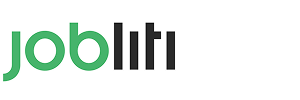The Ultimate Guide to Modern Career Fit Assessments for Confident Hiring Decisions

Take Job Test Based on Your Personality
Start the TestWhat These Assessments Are and Why They Matter
Hiring and career mobility hinge on reliable signals that reveal aptitude, potential, and role alignment. Organizations want to minimize guesswork, reduce turnover risk, and elevate the candidate experience, while job seekers crave clarity and evidence that their strengths will be recognized. Thoughtfully designed assessments provide a structured way to surface competencies, motivations, and learning agility, which are otherwise hard to capture in a resume or a short interview.
For many candidates, the job placement test functions like a navigational chart that translates capabilities into realistic pathways and training priorities. Rather than labeling people with a single score, robust instruments triangulate multiple domains, cognitive reasoning, behavioral preferences, situational judgment, and technical literacy, to paint a nuanced picture. That holistic snapshot helps hiring teams compare applicants fairly and explains next steps for improvement, which strengthens trust in the process and improves long-term outcomes.
Seasoned recruiters also watch how aggregate results from job placement tests shift over time to tune benchmarks, validate fairness, and support diversity goals. When data informs decision-making, hiring managers can calibrate interviews to probe relevant skills and avoid bias-prone shortcuts. Candidates benefit because preparation becomes targeted, coaching aligns with authentic requirements, and progress can be measured across iterative attempts. The result is a more transparent marketplace in which people understand what excellence looks like and how to get there.
How Modern Assessments Work: Structure, Domains, and Scoring
Contemporary tools are built around psychometric rigor, combining item calibration, adaptive algorithms, and norm-referenced scoring. A typical blueprint blends quick-hit modules with deeper tasks that measure problem-solving under time pressure and careful reasoning when time is abundant. Some platforms dynamically adjust difficulty based on responses so that results remain reliable even if a candidate gets several items right or wrong in a row, and scoring rubrics emphasize both accuracy and consistency.
| Component | What it measures | Candidate tips |
|---|---|---|
| Cognitive reasoning | Numerical, verbal, and abstract logic | Practice timed sets, check units, and scan stem wording carefully |
| Behavioral profile | Traits like diligence, sociability, and adaptability | Answer honestly and consistently rather than gaming the instrument |
| Situational judgment | Judgment in realistic work scenarios | Prioritize ethics, stakeholder impact, and practical constraints |
| Job-specific skills | Domain knowledge or tool proficiency | Study workflows, shortcuts, and common error patterns |
Sectors with technical complexity often rely on a job placement aptitude test to validate numerical fluency, spatial awareness, and multi-step reasoning under realistic time limits. These modules frequently use adaptive logic to keep questions in the sweet spot of difficulty, which preserves measurement precision and reduces fatigue. Clear reports then translate raw results into percentile ranks or proficiency bands that stakeholders can interpret at a glance.
Some employers enrich their evaluation with a compact job placement survey that captures environmental preferences, collaboration styles, and scheduling constraints. That qualitative signal complements objective scores by surfacing conditions under which performance thrives, such as autonomy level or feedback cadence. When these inputs are synthesized coherently, teams can match people to roles that fit both capability and context.
Benefits for Candidates and Employers
Clarity is the first win: candidates finally see how specific skills map to concrete job families, while organizations get a defensible basis for selection decisions. Reports break down strengths and growth areas so that coaching plans become actionable, and hiring managers can craft onboarding that accelerates time-to-productivity. Over time, the loop between preparation, assessment, and development creates momentum for both the individual and the business.
Early-career professionals often start with a free job placement assessment to gauge where their baseline sits relative to typical entry requirements. That snapshot makes it easier to choose study materials intelligently, rather than guessing or over-preparing in the wrong domain. When companies use the same frameworks internally, employees can target promotions with intention and track progress with consistent metrics.
Universities also lean on campus resources to broaden access, and many host a hub of free job placement tests students can complete before meeting with advisors. That advance information helps counselors personalize guidance, recommend internships, and connect learners to alumni in compatible roles. Employers benefit as well because applicant pools become stronger, pipelines widen, and onboarding friction declines.
Preparation Blueprint and Practice Strategy
Preparation is most effective when it mirrors the real experience while remaining sustainable week after week. A tight loop of diagnostic practice, review of mistakes, and focused drills beats marathon cram sessions that produce burnout. Candidates should deliberately practice under mild pressure, then shift to accuracy mode to refine methods and reduce careless misses.
Consistency becomes easier when you leverage practice job placement tests free from reputable sources and treat each attempt like a live session. After each set, catalog errors by type, then plan short drills around the highest-frequency issues to drive quick wins. That routine compounds, and small daily improvements translate into sizable score gains over a month.
To lower barriers for learners, more platforms bundle free job placement testing with bite-sized lessons, item walkthroughs, and adaptive quizzes. That ecosystem allows candidates to calibrate effort, avoid plateauing, and keep motivation high without overspending. A strong rhythm might include quick warmups, a timed block, a review sprint, and a weekly checkpoint to track progress.
- Start with a diagnostic to identify your top three improvement areas.
- Create a weekly schedule balancing timing practice and accuracy reps.
- Use error logs to spot patterns and prevent repeat mistakes.
- Simulate test-day conditions to rehearse focus and pacing.
- Reflect after each session to lock in lessons and adjust the plan.
Finding Quality Providers and Digital Access
Not all platforms are created equal, so vet credibility by looking for transparent methodologies, published validity evidence, and clear reporting. The best tools reveal how items are constructed, how scores are equated across forms, and how fairness is monitored across demographics. When vendors provide robust documentation, stakeholders can trust outcomes and build programs around the results.
If cost is a constraint, consider a job placement test online free that still offers scaled scoring, rationales, and structured feedback. Public libraries and local workforce boards frequently maintain curated directories of tools with strong reputations and accessible interfaces. That community support shortens the search and ensures that learners avoid low-quality sites with recycled content.
For broader reach and minimal friction, many resource hubs link directly to a free job placement test online alongside resume builders, cover letter templates, and interview simulators. Pairing assessments with career content creates a seamless journey from discovery to action so that insights immediately inform applications, networking, and upskilling. Over time, these integrated pathways increase confidence and reduce time-to-offer.
FAQ: Answers to Common Questions
How accurate are career fit assessments for real-world hiring?
Well-designed instruments can be highly predictive when they are validated against job performance and used as part of a structured process. Accuracy improves when employers combine test results with behavioral interviews, work samples, and reference checks that confirm observed patterns. Calibration is ongoing, so leaders should periodically revalidate content to keep alignment with evolving job demands.
What if I am nervous about testing under time pressure?
Anxiety is normal, and the solution is repeated exposure in realistic conditions with thoughtful reflection afterward. You can build pacing intuition by setting micro-goals, such as checkpoints every few questions, and by practicing recovery techniques when you get stuck. Over time, controlled simulations transform stress into focus and help you maintain momentum.
Can I find a reputable tool without paying upfront?
Cost does not have to be a barrier, and communities often host accessible alternatives through public institutions. When price is a sticking point, a well-constructed free job placement test can still deliver useful diagnostics that inform your study plan for the next month. Quality varies, so verify that any platform you use explains scoring, content areas, and the limits of what the results mean.
Is there a difference between unpaid and premium versions?
Free options are great for orientation, while paid suites usually add adaptive engines, larger item pools, and deeper analytics. Value shoppers often wonder whether a job placement test free can match the psychometric rigor of subscription tools in every domain. The practical answer is that basic insights are within reach at no cost, and incremental depth becomes worth it once your goals require finer-grained measurement.
How should I use my results after testing?
Think of your score report as a roadmap rather than a verdict, and translate each finding into one small next action. That might include focused drills on weak subskills, a portfolio project that demonstrates progress, or a conversation with a mentor about role fit. Iterate weekly, and use trendlines to guide when to re-test or shift emphasis in your preparation.
